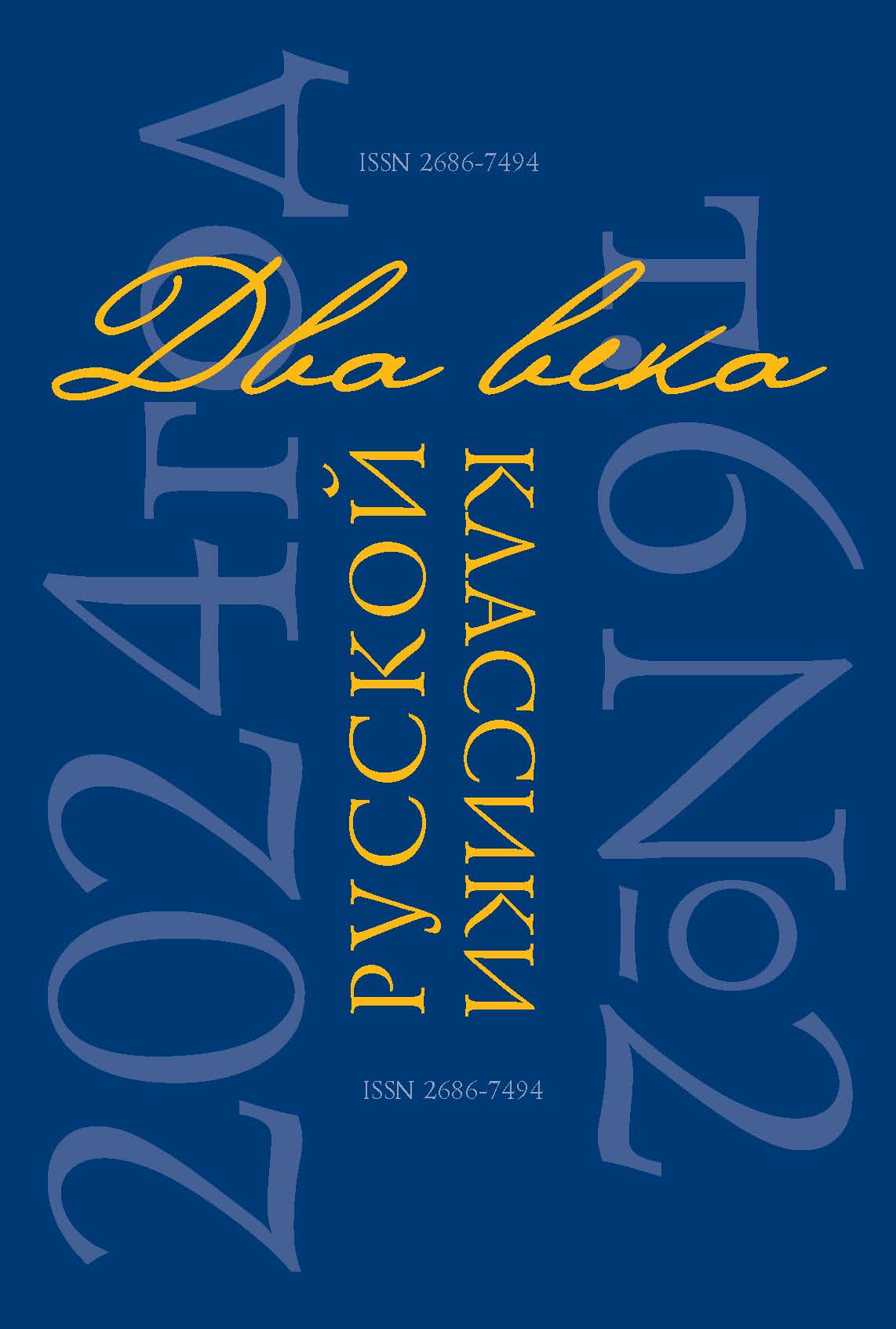Acknowledgments:
The study was financially supported by grant of the President of the Russian Federation for state support of young Russian scientists MK-2134.2022.2 “Poetics of the visible in the battle of the late 18th – first third of the 19th century.”
Abstract:
The subject of the research in the article are the categories of assessment of historical painting and the poetics of the battle image in the aesthetic thought of the early 19th century. The article deals with the views of N. M. Karamzin, G. R. Derzhavin, V. A. Zhukovsky reflected in aesthetic articles, poetry, epistolary on the cognitive nature of art and the specifics of the artistic perception of the historical process. The writers’ reasoning about historical plots, the heroic personality in history, the role and nature of the artist’s imagination significantly supplemented the academic program for the development of art. The author of the article proves that Karamzin, Derzhavin and Zhukovsky identified and substantiated the necessary components of the historical theme in painting and literature in their aesthetic reflections, which formed the thesaurus of their artistic and aesthetic thought. The result of the study was the reconstruction of aesthetic system of historical painting developed by writers at the beginning of the 19th century. The analysis of the battle descriptions by Karamzin, Derzhavin and Zhukovsky made it possible to identify the very process of their achieving vivid imagery when creating a verbal picture and to determine the mechanisms of visualization.
References
Anoshkina-Kasatkina, V. N. Russkii romantizm. V. A. Zhukovskii, A. S. Pushkin [Russian Romanticism. V. A. Zhukovsky, A. S. Pushkin]. Moscow, Moscow Region State University Publ., 2014. 400 p. (In Russ.)
Vereshchagina, A. G. Kritiki i iskusstvo. Ocherki istorii russkoi khudozhestvennoi kritiki serediny XVIII – pervoi treti XIX veka [Critics and Art. Essays on the History of Russian Art Criticism in the Middle of the 18th – the First Third of the 19th Century]. Moscow, Progress-Traditsiia Publ., 2004. 739 p. (In Russ.)
Gulin, A. V. “Tvorchestvo A. S. Pushkina kak derzhavnoe sluzhenie” [“Creativity of A. S. Pushkin as a Sovereign Service”]. Russkaia literatura i natsional’naia gosudarstvennost’ XVIII–XIX vv. Tezisy dokladov mezhdunarodnoi nauchnoi konferentsii, Moskva, 13–15 oktiabria 2020 goda [Russian Literature and National Statehood of the 18th–19th Centuries. Abstracts of the International Scientific Conference, Moscow, October 13–15, 2020]. Moscow, IWL RAS Publ., 2020, pp. 37–39. (In Russ.)
Esaulov, I. A. “Ekfrasis v russkoi literature novogo vremeni: kartina i ikona” [“Ekphrasis in Modern Russian Literature: Painting and Icon”]. Problemy istoricheskoi poetiki, no. 6, 2001, pp. 43–56. (In Russ.)
Kiseleva, I. A., Potashova, K. A. “Shliapa kak detal’ kostiuma i sredstvo kharakteristiki personazha v ‘Pis’makh russkogo puteshestvennika’ N. M. Karamzina” [“The Hat as a Part of the Costume and Means of Character’s Characteristics in ‘Letters of a Russian Traveler’ by N. M. Karamzin”]. Russkii iazyk v slavianskoi mezhkul’turnoi kommunikatsii: sbornik nauchnykh trudov [Russian Language in Slavic Intercultural Communication: A Collection of Works]. Moscow, Moscow Region State University Publ., 2017, pp. 137–146. (In Russ.)
Kiseleva, I. A., Potashova, K. A., Ermakova, A. S. “Smyslovaia napolnennost’ poniatiia ‘istoriia’ v khudozhestvennom mire M. Iu. Lermontova” [“Semantic Fullness of the Concept ‘History’ in the Artistic World of M. Yu. Lermontov”]. Russkaia rech’, no. 4, 2022, pp. 63–74. https://doi.org/10.31857/ S013161170021744-7 (In Russ.)
Nemirovskii, I. “O vizual’nosti stikhotvoreniia Pushkina ‘Geroi’.” [“On the Visuality of Pushkin’s Poem ‘Hero’.”]. Novoe literaturnoe obozrenie, no. 6 (172), 2021, pp. 163–179. (In Russ.)
Potashova, K. A. “Poeticheskaia formula ‘ia vizhu’ v tvorchestve K. N. Batiushkova: tvorcheskoe usvoenie derzhavinskoi traditsii” [“Poetic Formula ‘I See’ in K. N. Batyushkov’s Work: Creative Assimilation of the Derzhavin Tradition]. Nauchnyi dialog, no. 8, 2020, pp. 258–271. https://doi.org/10.24224/2227-1295-2020-8-258-271 (In Russ.).
Smoliarova, T. Zrimaia lirika. Derzhavin [Visible Lyrics. Derzhavin]. Moscow, New Literary Review Publ., 2011. 609 p. (In Russ.)
Shestakova, M. A., Batyr, T. B. “Osnovnye podkhody k issledovaniiu vizual’nogo myshleniia” [“Main Approaches to the Study of Visual Thinking”]. Praksema. Problemy vizual’noi semiotiki, no. 4 (30), 2021, pp. 256–272. DOI: 10.23951/2312-7899-2021-4-256-272 (In Russ.)









